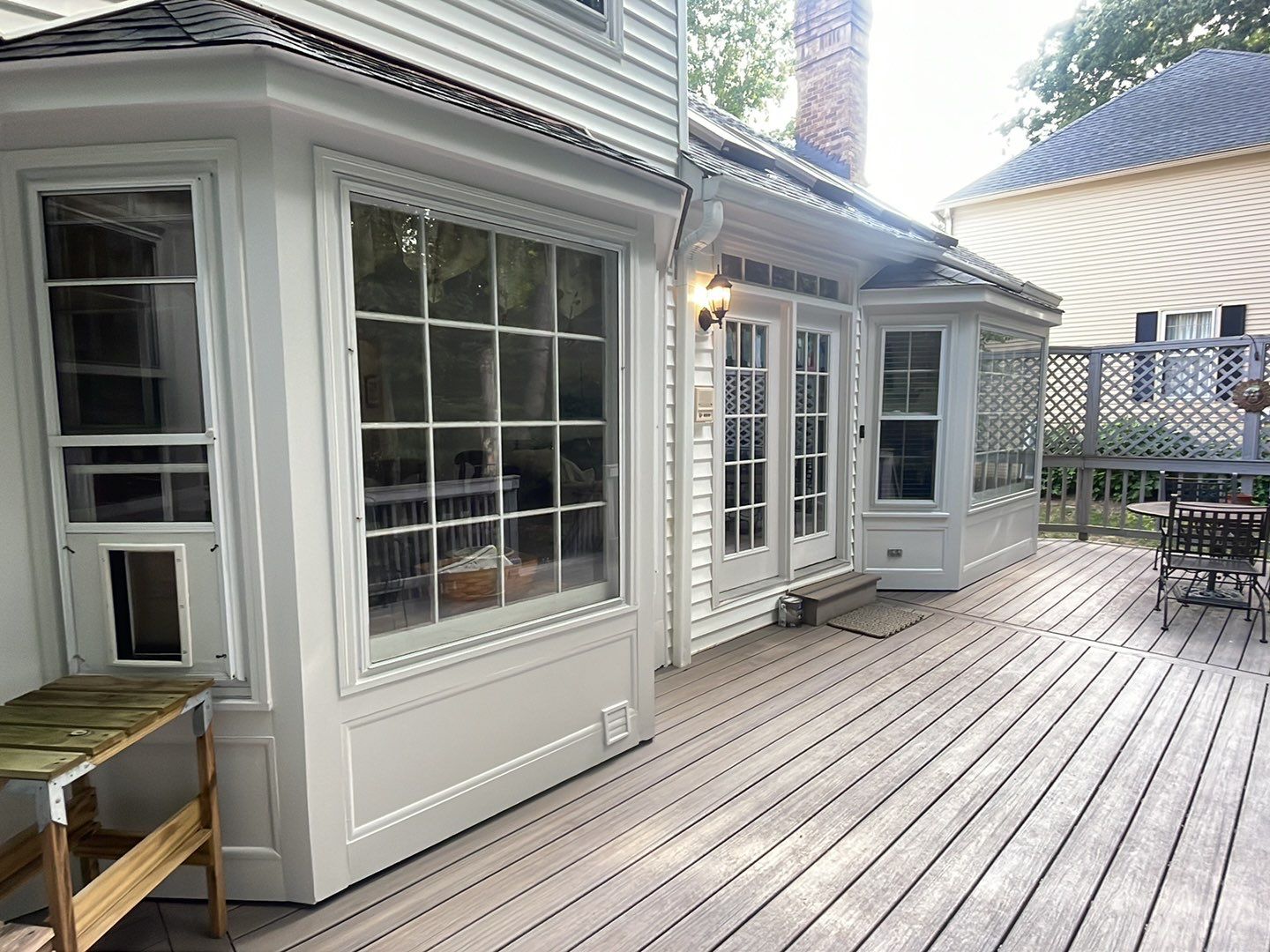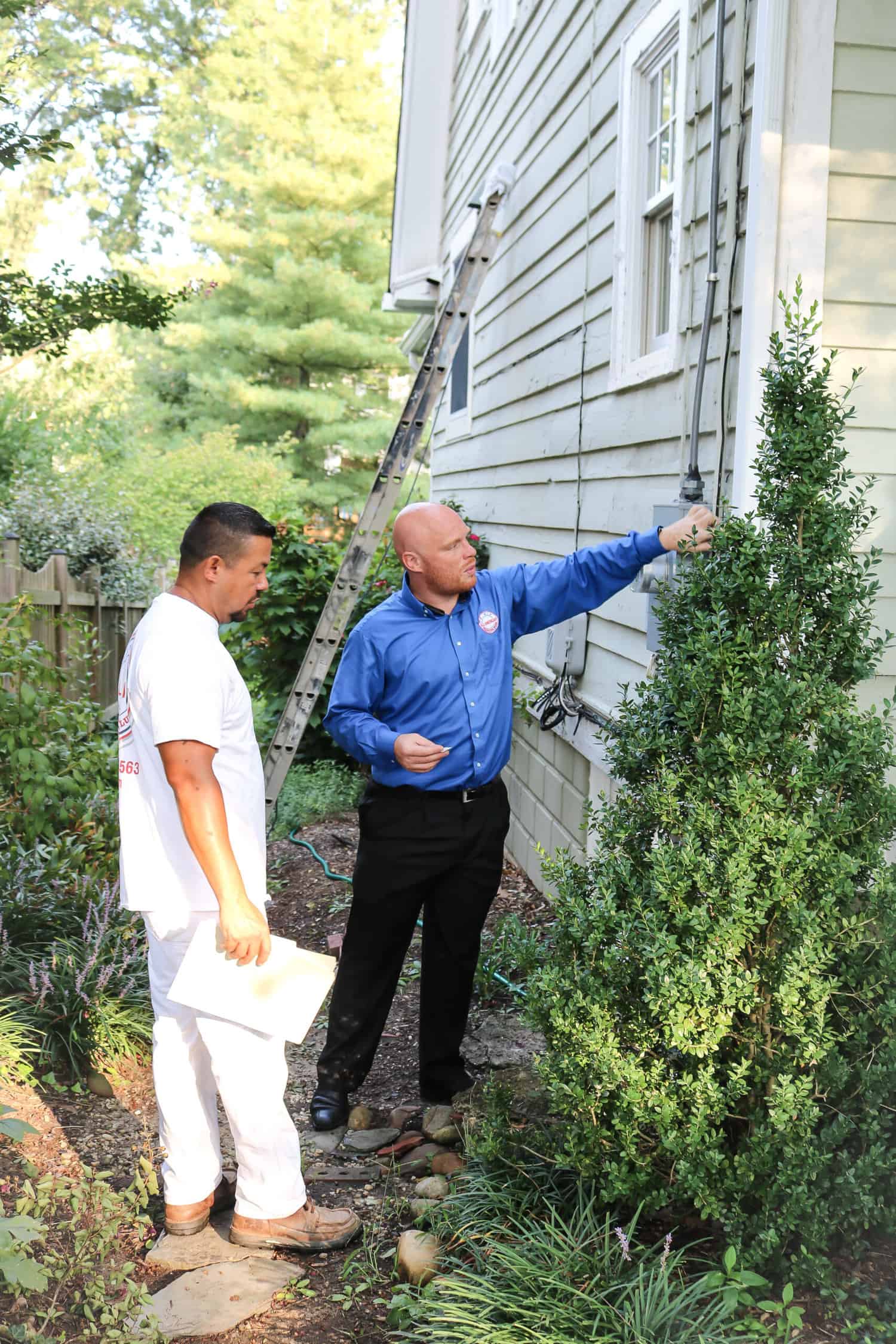In addition to enhancing the appearance of surfaces, paint also provides a barrier that protects these surfaces from harm. Staining achieves the same goals. However, painting and staining are different processes. The two terms are often conflated, and for good reason. There are plenty of similarities between paint and stain, but just as many differences. Let’s go over the main differences between painting and staining, and their various pros and cons.
Covering vs. Permeation
The main distinction between painting and staining is in how the material adheres to the surface to which it’s applied. This has a bit to do with chemical composition and physics, but to keep it simple, paint rests on top of a surface while stain penetrates it. This means that stain must be applied to porous materials, which is why stain is primarily used on wooden features, like decks.
By permeating the material, stain prevents moisture from entering. This protects the wood from rotting, splintering, and/or forming mildew. Paint, on the other hand, simply covers the outside of the material, which also serves to keep moisture and other forms of damage away, but not as deeply. Still, paint is much thicker than stain and still fills larger gaps in the material, so it provides plenty of protection.
Longevity (Fading vs. Peeling)
Paint and stain generally have different lifespans as well. If applied correctly ad well-maintained, a high-quality exterior painting job can last 5-7 years or more. And when paint is on its last leg, it will most likely begin to peel or chip away. Interior painting may last even longer since it’s not subject to the elements.
Stain, on the other hand, typically needs re-application every two years or so, depending. It’s also a bit harder to know when stain is at the end of its life because it won’t peel away like paint. Instead, stain will fade over time. Additionally, moisture may begin to enter the wood, meaning much of the stain is no longer there or working properly.
Opacity
Of course, paint and stain look different, too. In general, paint is thick and opaque, meaning it will cover the surface and its idiosyncrasies, especially when multiple coats are applied. Stain also comes in solid opaque colors, but it’s never as dense as paint. Plus, many homeowners prefer transparent or semi-transparent stain as these maintain the natural look of wood, revealing the grain and beautiful imperfections. For those who enjoy the look of their wooden features, stain is often the right choice. Home painting, on the other hand, is great for transforming surfaces.
Application
Painting and staining also demand somewhat different application processes. In both cases, the prep work is largely the same. Professional painters will tell you how important it is to thoroughly clean the surface and let it dry before painting or staining it. Plus, both painting and staining will require the use of brushes or a paint roller to apply the material. Because paint is so much thicker than stain, it’s a bit more difficult to apply and takes longer to dry. It’s also common to apply two coats of paint to a surface, whereas staining only requires one run-through. Applying additional coats of stain will simply darken the surface, not add any more protection.
So, What’s Better?
It should be clear by now that neither painting nor staining is inherently superior. Both options have their pros and cons, but they both serve to protect surfaces from damage. It really comes down to personal preference. If you don’t mind reapplying stain every couple of years, it’s a great option for wooden surfaces. But if you prefer the look and durability of paint, you can’t go wrong, either.
If you want to know more about painting and staining, or need help applying either material, contact All American Painting Plus. We offer home repair and painting services, which include both painting and staining as well as rotted wood replacement and repair. To learn more about all that we do, give us a call at (703)-620-5563!











